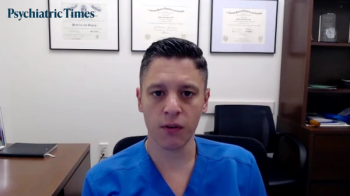
- Vol 37, Issue 6
- Volume 37
- Issue 6
Jumping Into Telehealth
My initial glance before my patient sees me usually tells me a lot about how they are doing and what to expect during the appointment.
FROM THE EDITOR
The last day I met with patients at our clinic was March 16th. By the end of that week, all 10 psychiatrists and 4 psychiatric nurse practitioners at both of our clinic sites had begun treating patients at our own homes through telehealth—something I had never utilized previously. It was a huge adjustment, for me as well as my patients. During this COVID-19 pandemic, our clinic is using the
My first day practicing via telehealth was quite an adventure, with my initial challenge figuring out how my virtual waiting room worked. When my next scheduled patient was not in my virtual waiting room, I reverted to the old-fashioned technology of calling the patient on the phone. Initially and somewhat surprising, most of my appointments that first day ended up occurring over the telephone. As I spoke with each patient, there were many reasons why many preferred the telephone over doxy.me: no Wi-Fi signal or internet connection at their home, no camera on their wireless phone, averse to the technology involved, or simply not interested in a video/audio appointment—they were happy with the phone.
Interestingly, another subgroup of patients were quite excited about having our appointment through the doxy.me platform. Some of my patients “arrived” 10 to 20 minutes early—at least the message below their name told me that was how long they had been logged into the waiting room. A few patients had their partners join in on the virtual appointment; not surprisingly, they were the ones who usually brought their partner into our routine clinic visits.
I find the telehealth experience disorienting, and it takes up more of my time than a simple face-to-face in-person medication visit. Every evening, I am emailed the following day’s schedule and service tickets, which I need to print out and needs to be completed and returned electronically to the clinic by the end of the day. I have 2 computer screens open in front of me: one screen with the doxy.me platform and the other open to our clinic’s portal with the patients’ charts on the screen along with the eprescribing program. On my lap is my clipboard to write a few notes to refresh my memory when I dictate the documentation for that visit, usually done at the end of the day. I get texts throughout the day to update me about schedule changes or patient related matters that need my attention from our support staff, who remain at the clinics to manage our schedules, the phone calls, and the other administrative work they so effortlessly balance.
Tomorrow—May 11th—begins my 8th week as a telepsychiatrist, and I cannot wait to get my old job back. Call me old-fashioned, but I truly miss walking out to the waiting room to call my patient’s name. My initial glance before my patient sees me usually tells me a lot about how they are doing and what to expect during the appointment. I walk behind the patient to my office and observe the patient’s posture, gait, energy level, and nuances that may suggest a new medical or neurological issue. Which of the 3 available seats in my office will be chosen, and what does that tell me? My initial open-ended question will unleash a torrent of information about how they are doing, derived from the verbal response, body language, subtleties of affect, direct eye-to-eye contact, and that feeling inside of me that is my intuitive response to the reply. Is there any unusual odor? Lots of information can be gleaned from the sense of smell. How will the session end? Will the patient stand up and walk toward the door based on my verbal cues? Do I have to stand, walk toward the door, possibly open it, and gesture the patient out?
I am reminded of my medical training at the
I realize the clinical and administrative necessity that telehealth provides for many practitioners and patients alike. In many parts of the US, especially in geographically isolated or expansive areas, there would be no access to treatment without telehealth. There is such a shortage of psychiatrists and psychiatric nurse practitioners that telehealth is the only option that allows clinicians to treat patients who have no other alternatives. And, during a pandemic, telehealth serves as a savior. I have many professional colleagues who thoroughly enjoy practicing psychiatry through telehealth, either part-time or full-time, and they serve an important role in the delivery of good psychiatric treatment. However, for me, I am ready to jump back into the clinic as soon as it is safe to do so. ❒
Dr Miller is Medical Director, Brain Health, Exeter, NH; Editor in Chief, Psychiatric Times; Staff Psychiatrist, Seacoast Mental Health Center, Exeter, NH; Consulting Psychiatrist, Exeter Hospital, Exeter, NH; Consulting Psychiatrist, Insight Meditation Society, Barre, MA.
Articles in this issue
over 5 years ago
Meeting Patients Where They Are: A Public Health Imperativeover 5 years ago
Prescribing Hope for Recoveryover 5 years ago
Stage-Specific Treatment of Psychotic Disordersover 5 years ago
Investing Tips in a Time of Crisisover 5 years ago
Talking to Pregnant Patients About Cannabis Useover 5 years ago
In Memoriam: Psychiatrists Who Are Coronavirus Casualtiesover 5 years ago
The Future of Telepsychiatryover 5 years ago
ImmigrantNewsletter
Receive trusted psychiatric news, expert analysis, and clinical insights — subscribe today to support your practice and your patients.

















